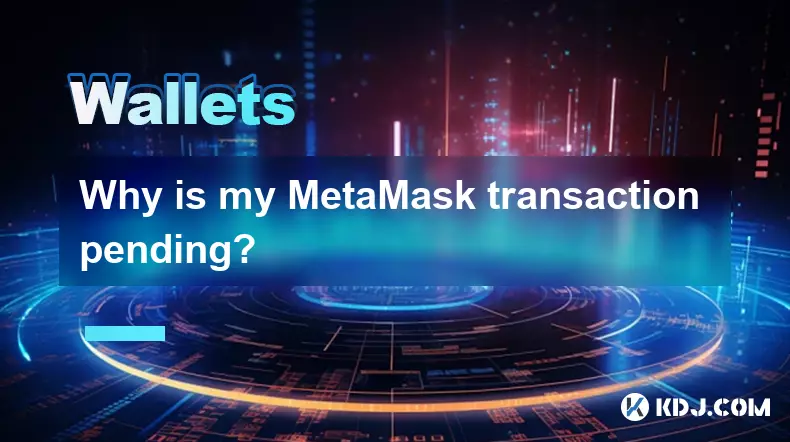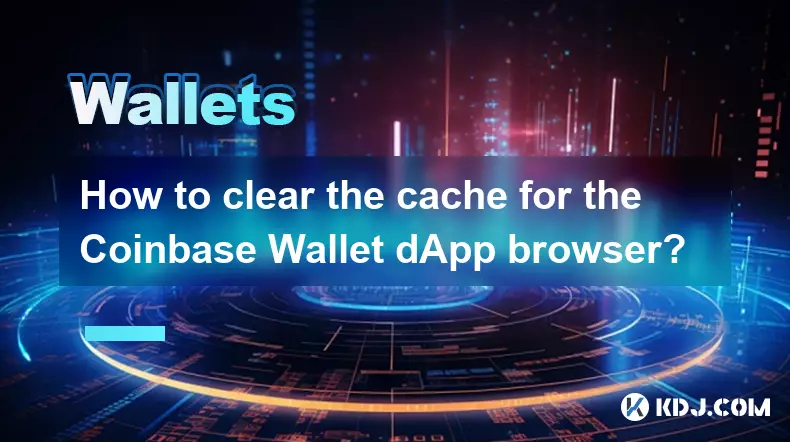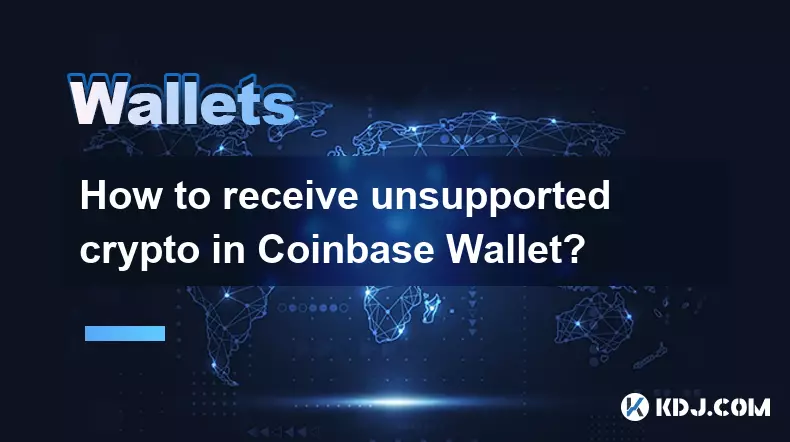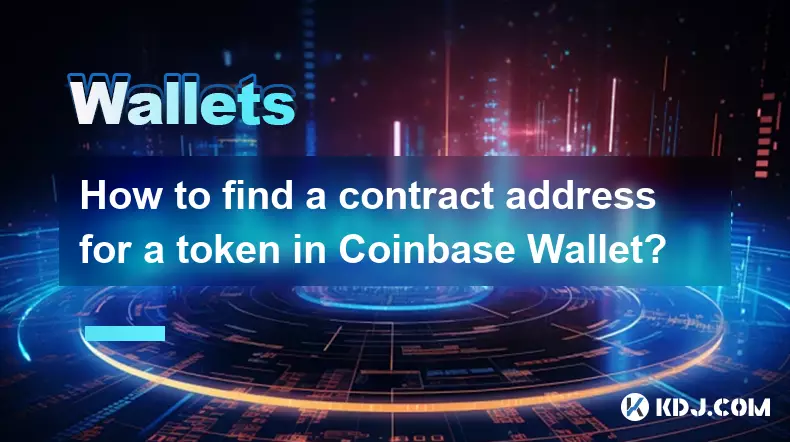-
 bitcoin
bitcoin $114206.058833 USD
-0.82% -
 ethereum
ethereum $4129.796871 USD
-1.31% -
 tether
tether $0.999964 USD
0.00% -
 xrp
xrp $2.640265 USD
-0.68% -
 bnb
bnb $1141.700384 USD
-0.18% -
 solana
solana $200.380665 USD
-2.05% -
 usd-coin
usd-coin $0.999888 USD
0.01% -
 dogecoin
dogecoin $0.200706 USD
-3.43% -
 tron
tron $0.299112 USD
-0.60% -
 cardano
cardano $0.668491 USD
-2.72% -
 hyperliquid
hyperliquid $46.924669 USD
-2.72% -
 chainlink
chainlink $18.286013 USD
-2.66% -
 bitcoin-cash
bitcoin-cash $555.734639 USD
-0.58% -
 stellar
stellar $0.323999 USD
-2.74% -
 ethena-usde
ethena-usde $0.999169 USD
0.00%
Why is my MetaMask transaction pending?
MetaMask transaction delays often stem from low gas fees, network congestion, or wallet settings—adjusting gas or canceling with a higher fee can resolve stuck transactions.
Oct 17, 2025 at 06:18 am

Understanding MetaMask Transaction Delays
1. Transactions on the Ethereum blockchain, and by extension other EVM-compatible chains, rely heavily on gas fees to determine processing priority. When a user submits a transaction through MetaMask without setting a competitive gas price, it often gets stuck in the mempool. The mempool is a holding area for unconfirmed transactions, and miners or validators choose which ones to include in the next block based on fee incentives. If your transaction offers a low fee, it may sit idle indefinitely.
2. Network congestion plays a critical role in delaying confirmations. During periods of high activity—such as NFT mint launches or major DeFi protocol updates—the volume of pending transactions surges. This creates a backlog, forcing users to either wait or take corrective action. Even if your gas price was reasonable at submission, sudden spikes in demand can render it insufficient.
3. Wallet settings matter significantly. MetaMask allows manual adjustment of gas fees, but many users rely on default suggestions. These estimates are not always accurate, especially during volatile network conditions. Choosing “Low” under the speed slider might save on costs but drastically increases the risk of prolonged pending status.
4. Chain reorganizations or temporary node issues can also contribute to delays. Although less common, these events cause nodes to temporarily lose sync with the latest block state, leading to inconsistent transaction visibility across different explorers or wallet interfaces.
5. Some decentralized applications initiate multiple dependent transactions. If the first one remains unconfirmed, subsequent actions will not proceed. This dependency chain can give the impression that all transactions are stuck, when in reality, resolving the initial one often clears the rest automatically.
How Gas Fees Influence Confirmation Speed
1. Every operation on the Ethereum network consumes a certain amount of gas, which represents computational effort. Users must pay for this gas in ETH, and the total cost is calculated as gas used multiplied by gas price (measured in gwei). Higher gas prices incentivize validators to prioritize your transaction over others.
2. Tools like Etherscan’s gas tracker or MetaMask’s built-in estimator provide real-time recommendations. However, relying solely on these tools without verifying current network load can lead to underpricing. Checking live data from sources like GasNow or Blocknative gives a more accurate picture.
3. On Layer 2 networks such as Arbitrum or Optimism, gas dynamics differ slightly due to off-chain computation. While base fees are generally lower, finality still depends on sequencer availability and batch submission timing. A pending transaction here might resolve slower than expected despite minimal fees.
4. Wallets sometimes fail to update gas prices dynamically. If you initiated a swap weeks ago during low congestion but never canceled it, that original fee is likely obsolete. Newer transactions with higher bids will jump ahead, leaving older ones stranded unless replaced.
5. Understanding the difference between base fee and priority fee is essential. The base fee is burned and adjusts per block, while the priority fee goes to the validator. During congestion, both values rise, so neglecting to increase the priority component reduces chances of inclusion.
Steps to Resolve a Stuck Transaction
1. Open MetaMask and navigate to the transaction history. Locate the pending transaction and click on it. You should see options labeled “Speed Up” or “Cancel.” Choosing “Speed Up” lets you resend the same transaction with a higher gas fee, effectively replacing the old one.
2. To cancel a transaction, select “Cancel” and submit a new one with a zero-value transfer to your own address using a much higher gas price. This consumes the nonce and invalidates the original. Ensure the cancellation attempt uses a significantly elevated fee to guarantee swift processing.
3. If neither option appears, disconnect and reconnect your wallet, then refresh the page. Sometimes UI glitches hide available actions. Clearing browser cache or switching to a desktop client may restore functionality.
4. Manually editing the nonce is another method, though riskier. By increasing the nonce value in advanced settings, you can send a replacement transaction. However, incorrect nonce manipulation can result in multiple failed attempts or unintended spending.
5. After successfully replacing or canceling, verify the outcome via a blockchain explorer like Etherscan. Enter your wallet address and check the transaction list. Confirmed replacements will show up with updated timestamps and higher gas usage.
Frequently Asked Questions
Can a MetaMask transaction remain pending forever?Yes, technically. If no miner includes it due to an extremely low fee, it stays in the mempool until nodes drop it after a timeout period, which varies across clients. Most nodes purge stale transactions within hours to days.
Will I lose funds if my transaction is pending?No. Funds are only deducted once the transaction confirms. While pending, they appear reduced in balance but remain accessible upon cancellation or failure.
Does changing networks in MetaMask affect pending transactions?Switching networks doesn’t cancel transactions. They remain tied to the original chain. Always return to the correct network to manage them properly.
What happens if I close MetaMask while a transaction is pending?Closing the extension or browser doesn’t stop the transaction. It continues propagating through the network. Management requires reopening MetaMask and taking explicit action like speeding up or canceling.
Disclaimer:info@kdj.com
The information provided is not trading advice. kdj.com does not assume any responsibility for any investments made based on the information provided in this article. Cryptocurrencies are highly volatile and it is highly recommended that you invest with caution after thorough research!
If you believe that the content used on this website infringes your copyright, please contact us immediately (info@kdj.com) and we will delete it promptly.
- Essex Post Office, 5p Coins, and King Charles: A Royal Mint Revelation!
- 2025-10-23 10:30:16
- Waymo's Newark Airport AV Tests: Alphabet's AI Gamble Pays Off?
- 2025-10-23 10:30:16
- King Charles 5p Coins: A Royal Flush in Your Pocket?
- 2025-10-23 10:35:18
- Solana, Crypto Advisory, and Forward Industries: A New York Minute on the Future of Finance
- 2025-10-23 08:51:22
- MAGACOIN: Ethereum Whales Dive into the Hottest Presale of 2025
- 2025-10-23 08:51:22
- Kadena's End of the Road? KDA Token Plummets Amid Project Abandonment
- 2025-10-23 08:55:34
Related knowledge

How to clear the cache for the Coinbase Wallet dApp browser?
Oct 27,2025 at 12:54pm
Understanding the Coinbase Wallet dApp Browser Cache1. The Coinbase Wallet mobile application includes a built-in dApp browser that allows users to in...

How to receive unsupported crypto in Coinbase Wallet?
Oct 25,2025 at 09:48am
Understanding Unsupported Cryptocurrencies in Coinbase Wallet1. Coinbase Wallet supports a wide range of cryptocurrencies, but not every token availab...

How to interact with smart contracts using Coinbase Wallet?
Oct 27,2025 at 12:00am
Connecting Coinbase Wallet to a dApp Interface1. Open the decentralized application (dApp) you want to interact with in your mobile browser or web bro...

How to solve connection issues with the Coinbase Wallet extension?
Oct 28,2025 at 12:02am
Troubleshooting Network and Browser Compatibility1. Ensure your browser is up to date. Older versions may lack support for modern Web3 protocols requi...

How to find a contract address for a token in Coinbase Wallet?
Oct 25,2025 at 12:09pm
Understanding Token Contract Addresses in Coinbase Wallet1. A contract address is a unique identifier for a specific token on a blockchain network. In...

How to switch between wallets in the Coinbase Wallet app?
Oct 27,2025 at 11:03pm
Understanding Wallet Management in Coinbase WalletThe Coinbase Wallet app allows users to manage multiple cryptocurrency wallets within a single inter...

How to clear the cache for the Coinbase Wallet dApp browser?
Oct 27,2025 at 12:54pm
Understanding the Coinbase Wallet dApp Browser Cache1. The Coinbase Wallet mobile application includes a built-in dApp browser that allows users to in...

How to receive unsupported crypto in Coinbase Wallet?
Oct 25,2025 at 09:48am
Understanding Unsupported Cryptocurrencies in Coinbase Wallet1. Coinbase Wallet supports a wide range of cryptocurrencies, but not every token availab...

How to interact with smart contracts using Coinbase Wallet?
Oct 27,2025 at 12:00am
Connecting Coinbase Wallet to a dApp Interface1. Open the decentralized application (dApp) you want to interact with in your mobile browser or web bro...

How to solve connection issues with the Coinbase Wallet extension?
Oct 28,2025 at 12:02am
Troubleshooting Network and Browser Compatibility1. Ensure your browser is up to date. Older versions may lack support for modern Web3 protocols requi...

How to find a contract address for a token in Coinbase Wallet?
Oct 25,2025 at 12:09pm
Understanding Token Contract Addresses in Coinbase Wallet1. A contract address is a unique identifier for a specific token on a blockchain network. In...

How to switch between wallets in the Coinbase Wallet app?
Oct 27,2025 at 11:03pm
Understanding Wallet Management in Coinbase WalletThe Coinbase Wallet app allows users to manage multiple cryptocurrency wallets within a single inter...
See all articles










































































